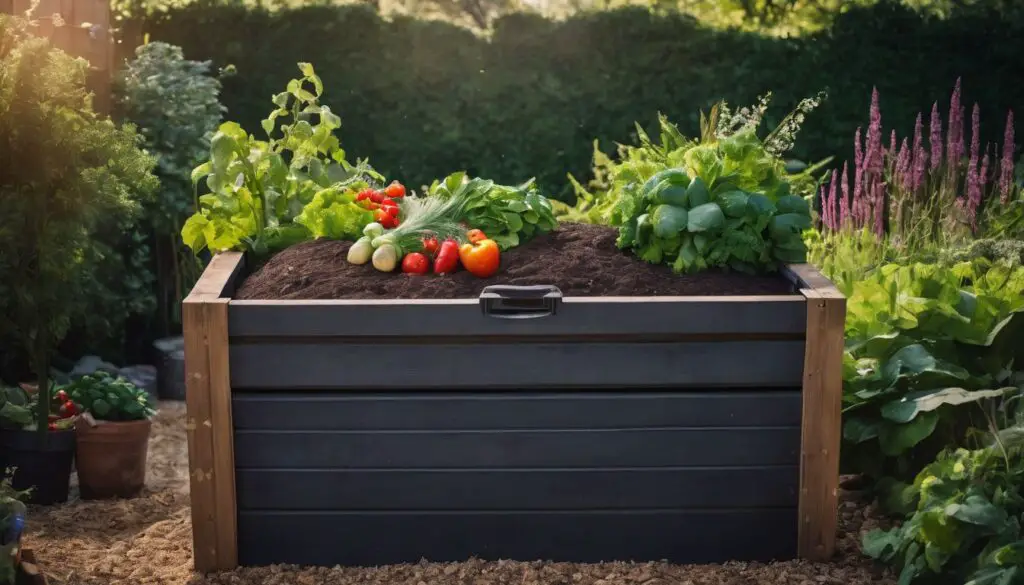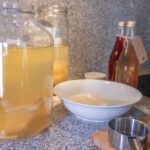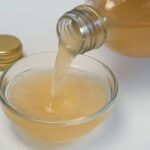Are you questioning how your everyday habits could positively impact the environment? Did you know that nearly 28% of waste that ends up in landfills can be composted instead, reducing harmful methane emissions? This article aims to shed light on how incorporating composting into your routine can greatly help our planet.
Can Composting Help The Environment?
Composting significantly benefits the environment by reducing waste, cutting methane emissions from landfills, enhancing soil health, conserving water, and reducing personal food waste. It is an effective tool against climate change and supports sustainable practices. Adopting composting at home or in communities can make a positive impact on the environment and promote a greener planet.
Keep reading and unlock a simple yet effective tool against climate change!
Key Takeaways
- Composting reduces waste by turning organic materials into nutrient-rich soil, cutting down on the amount of trash that goes to landfills.
- Composting helps reduce harmful methane emissions from landfills, which are a major contributor to climate change.
- Composting improves soil health and prevents erosion, making it easier for plants to grow and reducing the need for chemical fertilizers.
- Composting conserves water by improving soil structure and moisture retention, reducing the need for excessive irrigation in gardens and agriculture.
Benefits of Composting
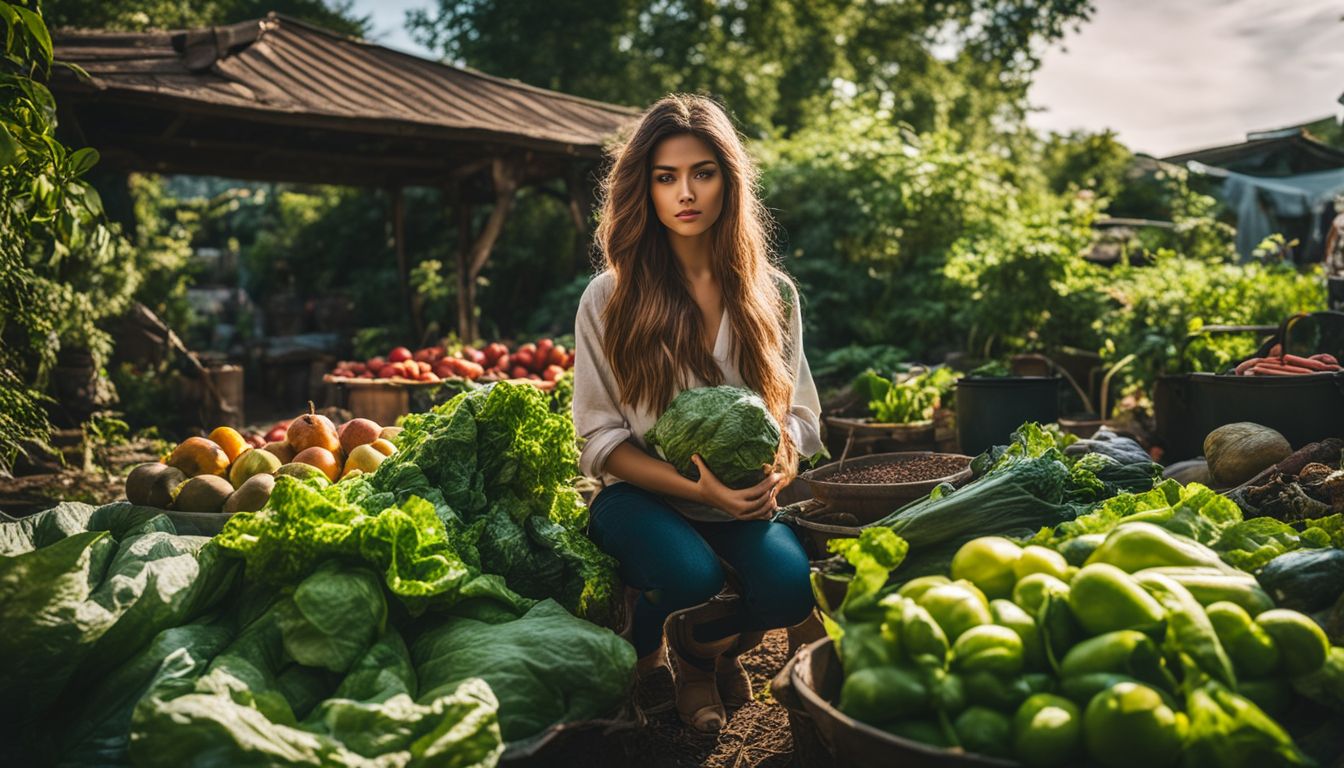
Composting reduces the waste stream, cuts methane emissions from landfills, improves soil health and lessens erosion, conserves water, and reduces personal food waste.
Reduces the Waste Stream
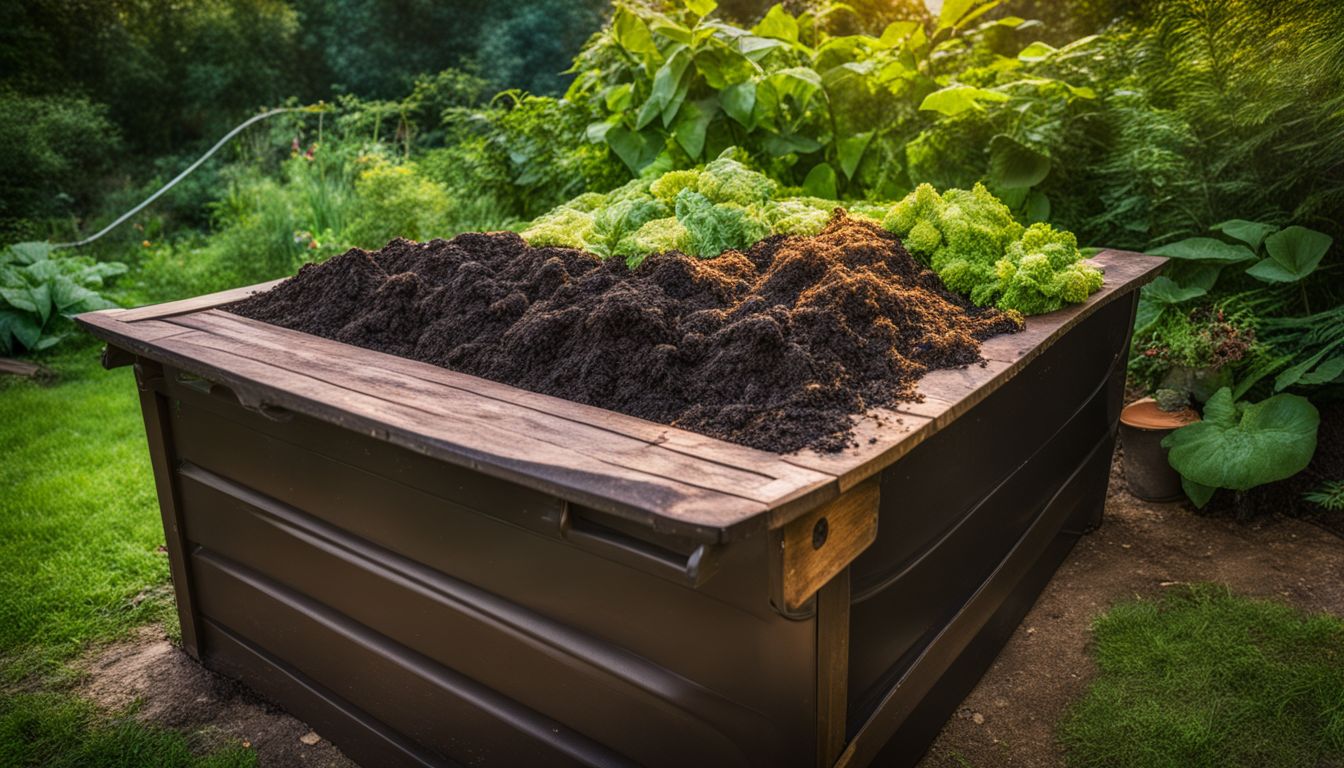
Composting makes a big cut in the waste stream. We toss so much trash into landfills each day. A lot of this is stuff we could compost instead. As stated before, 28% of what ends up in landfills can be turned into compost.
This takes load off our dumps and helps us make something useful out of trash!
Cuts Methane Emissions From Landfills

Composting helps cut methane emissions from landfills. Did you know that approximately 28% of waste in landfills can actually be composted? When organic waste sits in a landfill, it produces methane, which is a potent greenhouse gas.
By diverting this waste to composting instead, we can significantly reduce those harmful emissions. Composting allows organic material to break down naturally and aerobically, minimizing the release of methane into the atmosphere.
This is an important step towards mitigating climate change and creating more sustainable waste management practices.
Improves Soil Health and Lessens Erosion
Composting improves soil health and reduces erosion. When organic waste is composted, it breaks down into nutrient-rich humus that enhances the fertility of the soil. This enriched soil structure becomes more resistant to erosion, preventing valuable topsoil from being washed away by wind or water.
Additionally, compost helps the soil retain moisture, reducing the need for excess watering. By improving soil health and lessening erosion, composting supports sustainable agriculture practices and promotes healthier plant growth in a natural and environmentally friendly way.
Conserves Water

Composting also has the benefit of conserving water. When we use compost in our gardens or agriculture, it helps improve soil structure and moisture retention. This means that the soil is better able to hold onto water, reducing the amount of irrigation needed for crops.
By conserving water through composting, we can contribute to sustainable agriculture practices and reduce our overall water consumption.
Reduces Personal Food Waste
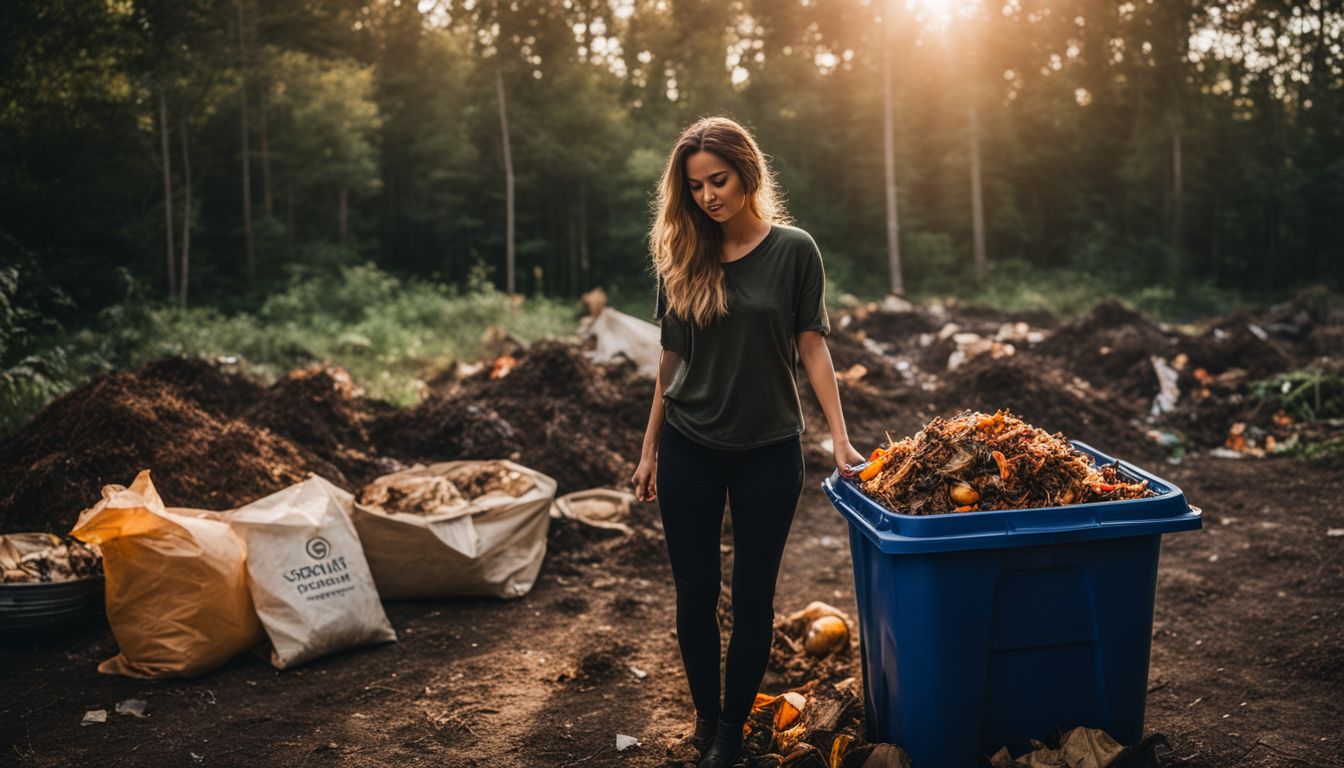
Composting is a great way to reduce personal food waste. Instead of throwing away leftover fruits, vegetables, and other organic materials, you can compost them. When these items are composted, they break down naturally to become nutrient-rich soil.
This soil can then be used in gardens or for growing plants at home. By composting our food waste, we not only help the environment by keeping it out of landfills but also create a valuable resource that promotes healthy plant growth and reduces the need for chemical fertilizers.
So instead of tossing your food scraps in the trash, consider starting a compost pile or using a compost bin to make the most of your leftovers!
How to Compost

To compost effectively, gather a mixture of organic materials such as kitchen scraps, yard waste, and leaves in a designated composting area.
Compost Ingredients

Composting is a natural process that turns organic waste into nutrient-rich soil. To create compost, you need a mixture of brown and green materials. Brown materials include things like dry leaves, twigs, and newspaper, while green materials include items such as fruit and vegetable scraps, coffee grounds, and grass clippings.
These ingredients provide the carbon and nitrogen necessary for decomposition to occur. It’s important to maintain a balance between browns and greens in your compost pile or bin to ensure proper breakdown of the organic matter.
By using these compost ingredients, you can help reduce waste going to landfills while creating healthy soil for your plants.
Temperature Control
Temperature control is an important aspect of composting. The decomposition process works best when the temperature inside the compost pile is between 135-160°F (57-71°C). This high temperature helps to break down organic materials more quickly and efficiently.
It is essential to monitor and maintain this temperature range by regularly turning or aerating the compost pile, as well as adding materials in a balanced ratio of carbon-rich and nitrogen-rich ingredients.
Keeping the right temperature ensures that beneficial microorganisms can thrive, speeding up decomposition and producing nutrient-rich compost for your garden or plants.
Consistent Aeration
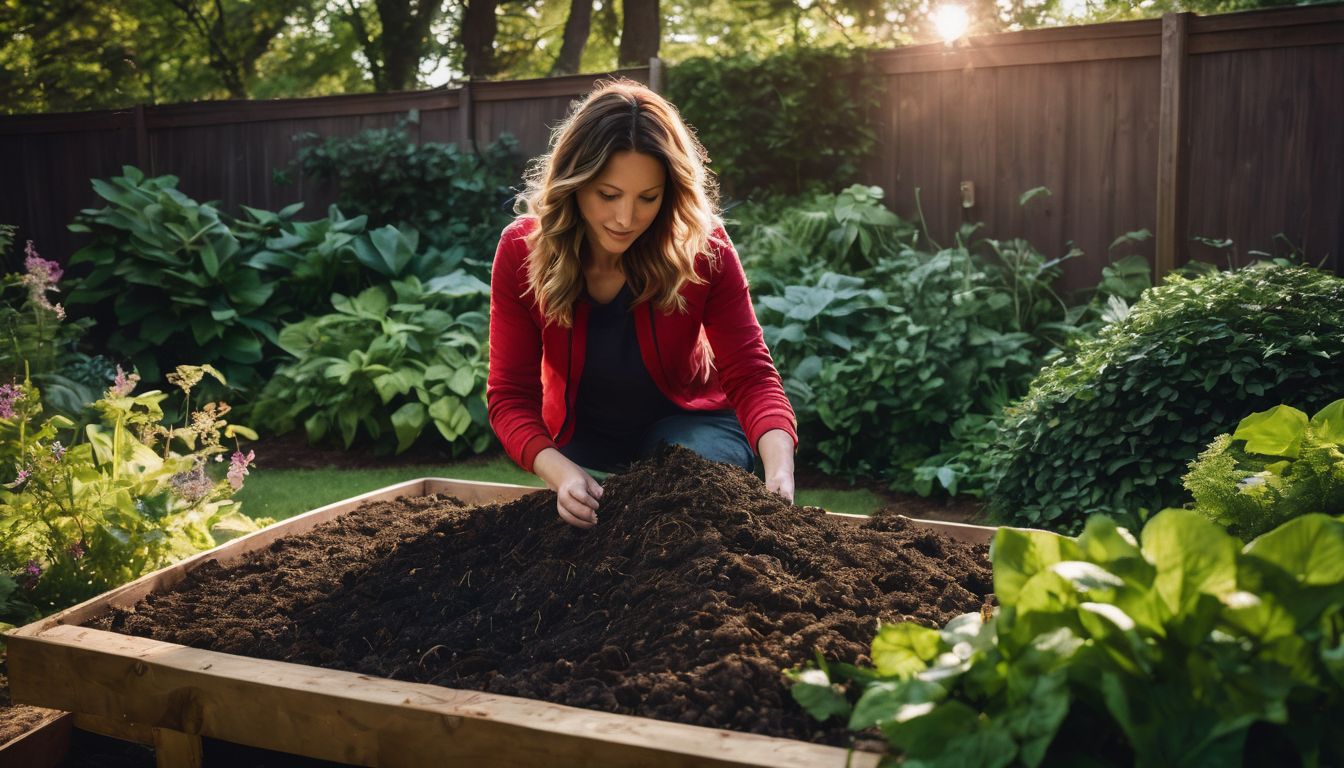
Consistent aeration is an important aspect of composting. Aeration means adding oxygen to the compost pile, which helps in the breakdown process. By turning or mixing the compost regularly, you ensure that oxygen reaches all parts of the pile.
This promotes the growth of beneficial bacteria and fungi that thrive in aerobic conditions and break down organic matter more efficiently. Consistent aeration also prevents unpleasant odors by reducing anaerobic decomposition, which can produce foul-smelling gases like hydrogen sulfide.
Additionally, proper airflow through the compost heap prevents it from becoming compacted, allowing for better moisture distribution and preventing excessive water retention. So remember to turn or mix your compost regularly to maintain consistent aeration and foster optimal decomposition.
Maintaining Moisture
To maintain moisture in your compost pile, it’s important to keep it damp but not too wet. Moisture helps with the decomposition process and creates a favorable environment for beneficial microorganisms to thrive.
Aim for a moisture level similar to that of a wrung-out sponge.
One way to maintain moisture is by watering your compost pile regularly, especially during dry periods. Use a garden hose or watering can to add water as needed, making sure to evenly distribute it throughout the pile.
Covering your compost pile with a tarp or lid can also help retain moisture by preventing excessive evaporation from sunlight and wind. This can be especially helpful in hotter climates or during the summer months.
Choosing a Compost Bin

To start composting at home, you need to choose the right compost bin. There are different types of compost bins available, such as tumblers, bins with open bottoms, or wire mesh enclosures.
Consider the size of your garden and the amount of waste you generate when selecting a bin. A larger garden may require a bigger bin or multiple bins if you have more waste. Look for a bin that is sturdy and has good ventilation to ensure proper airflow for decomposition.
Some bins even come with features like rotating drums or built-in aeration systems for easier maintenance. When choosing a compost bin, make sure it fits your needs and budget while providing adequate space for organic waste to break down into rich soil amendment.
What Can and Cannot Be Composted
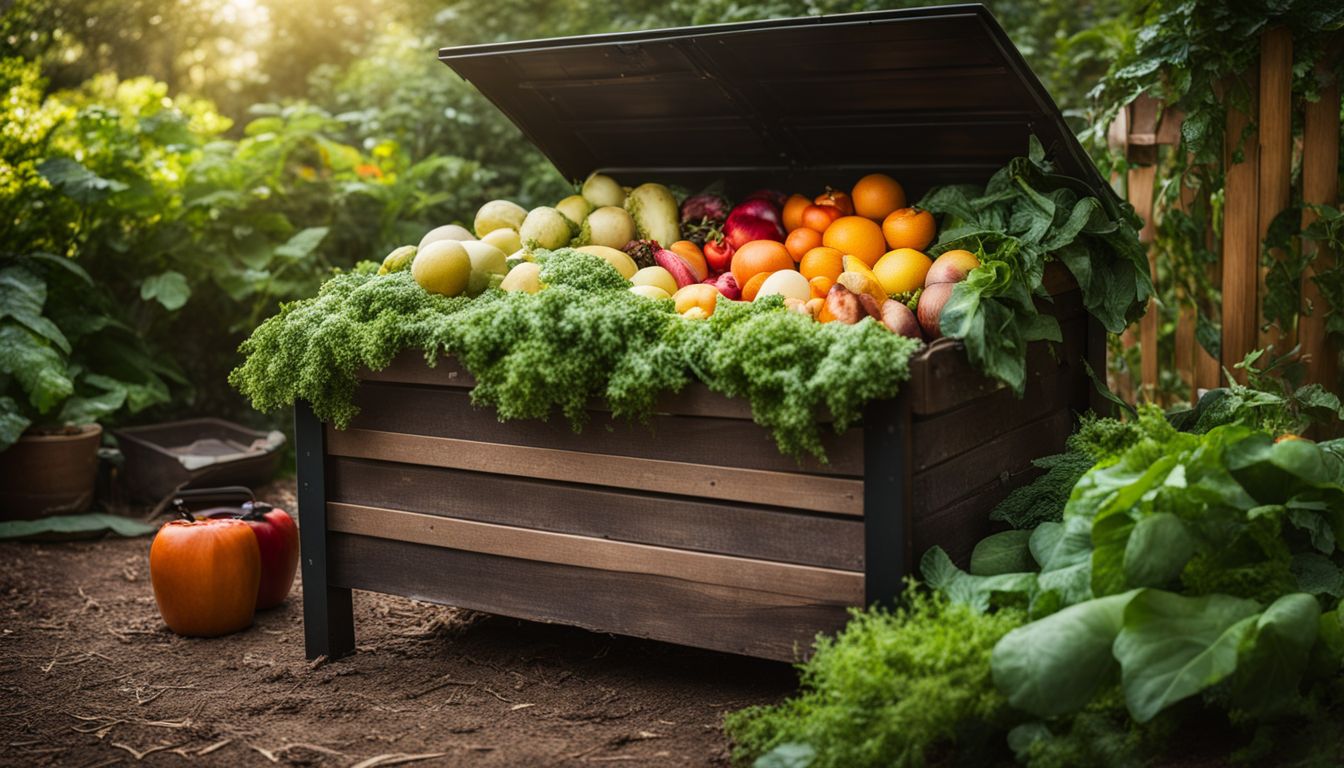
Certain items can be composted, such as fruit and vegetable scraps, yard waste, coffee grounds, and eggshells. However, there are also items that should not be composted, including pet waste, inorganic materials like plastic or metal, colored or glossy paper, diseased plants, and dairy and other animal products.
Pet Waste
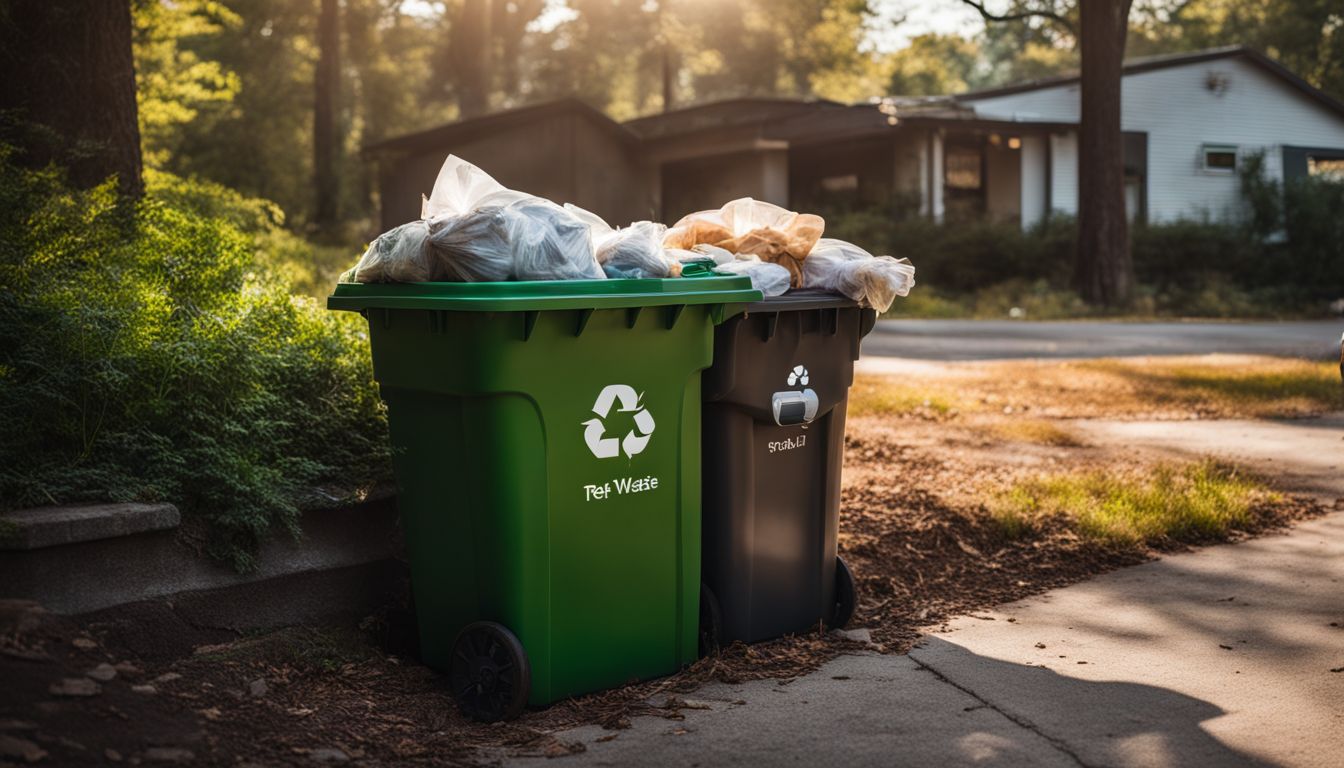
Composting pet waste is not recommended for home or community composting. Pet waste, such as dog and cat feces, can contain harmful bacteria and parasites that may not be killed during the composting process.
When added to compost piles, these pathogens can survive and potentially contaminate plants or soil. It’s best to dispose of pet waste in a designated trash bin that is properly sealed to prevent any environmental contamination.
Inorganic Materials
Inorganic materials are substances that cannot be broken down by composting. These include things like plastic, glass, metal, and synthetic fibers. It is important to keep these materials out of your compost pile because they do not decompose and can contaminate the finished compost.
When in doubt, it’s best to leave out any materials that are not organic or biodegradable. This will help ensure that your compost remains healthy and free from unwanted items.
Remember to only add organic waste to your compost bin, such as fruit and vegetable scraps, coffee grounds, and yard trimmings. By doing so, you can create nutrient-rich compost that benefits both the environment and your plants.
Colored or Glossy Paper
Colored or glossy paper should not be composted. This is because these types of paper often contain chemicals and additives that can be harmful to the environment when they break down.
Composting is best done with plain, unbleached paper like newspaper or cardboard, which can decompose naturally and contribute to healthy soil. By avoiding colored or glossy paper in our compost bins, we can help ensure that our compost remains free from harmful substances and maintains its environmental benefits.
Diseased Plants
Diseased plants should not be added to compost piles. This is because the heat generated during the composting process may not be enough to kill pathogens and diseases present in these plants.
If you add diseased plants to your compost, there is a risk that those diseases could spread when you use the finished compost in your garden. It’s best to dispose of diseased plants separately or through other means like burning or burying them deeply in order to prevent any further contamination.
Dairy and Other Animal Products
Dairy and other animal products can be challenging to compost. While some sources suggest that small amounts of dairy, such as butter or cheese scraps, can be composted in home systems, it’s generally recommended to avoid including these items.
The reason is that dairy products can attract pests like rodents and flies and may produce unpleasant smells as they break down. Additionally, the decomposition process for animal products tends to take longer and may require higher temperatures than typical backyard composting systems reach.
It is best to avoid adding dairy and other animal products to your compost pile unless you have a specialized system that can handle them properly.
Additional Tips for Composting at Home

Prevent fruit flies in your compost bin by covering fresh food scraps with a layer of dried leaves or newspaper.
Preventing Fruit Flies in Your Compost Bin
To prevent fruit flies in your compost bin, it’s important to keep your bin clean and odor-free. Fruit flies are attracted to ripe or rotting fruits and vegetables, so make sure you bury these items deep within the compost pile.
Additionally, avoid adding meat, dairy products, or oily foods to your compost as they can also attract fruit flies. It’s a good idea to cover your compost with a breathable lid or use a bin with a tight-fitting lid to keep the fruit flies out.
Regularly turning and aerating the compost will also help control moisture levels and discourage fruit fly breeding.
Safety Precautions
To ensure safe and effective composting, there are a few important safety precautions to keep in mind. First, it’s essential to wear gloves while handling the materials to avoid any potential skin irritation or cuts.
Secondly, make sure your compost pile is located away from any flammable materials or structures. This will help prevent accidental fires. Additionally, be mindful of what you add to your compost pile – avoid adding any toxic chemicals, pesticides, or diseased plants that could harm the environment or impact the quality of your compost.
Lastly, if you choose to use power tools when building or maintaining your compost bin, always follow proper safety procedures and guidelines to avoid accidents or injuries. By taking these safety precautions into account during your composting journey, you can enjoy its benefits while ensuring a safe and healthy environment for yourself and others.
How to Use Compost
To use compost, simply spread a layer of it over your garden soil or mix it into the top few inches. This will help improve soil health and fertility, providing plants with essential nutrients for growth.
Compost can also be used as a mulch to retain moisture and suppress weeds around your plants. For indoor plants, you can mix compost with potting soil to create a nutrient-rich mixture.
Remember that compost should be moist but not soggy, so make sure to water your plants accordingly. Happy gardening!
Community Composting and Outsourcing Options

Community composting and outsourcing options provide alternative ways for individuals and communities to manage their organic waste. Instead of composting at home, community composting allows people to bring their food scraps to a central location where it is collectively processed into compost.
This option is particularly beneficial for those who may not have the space or resources to compost on their own.
Outsourcing options involve hiring a service or organization that specializes in collecting and processing organic waste. These services often provide curbside pickup, making it convenient for residents to dispose of their food scraps.
The collected waste is then taken to a facility where it is professionally managed and turned into high-quality compost.
Both community composting and outsourcing options have several advantages. They help reduce individual carbon footprints by diverting organic waste from landfills, which reduces methane emissions.
Additionally, these practices promote sustainable agriculture by providing nutrient-rich soil amendments that support healthy plant growth without relying on chemical fertilizers.
By participating in community composting or using outsourcing services, individuals can contribute to a more sustainable future while reducing the environmental impact of their organic waste disposal.
It’s an easy way for everyone to make a positive difference in our environment and create healthier soils for our crops.
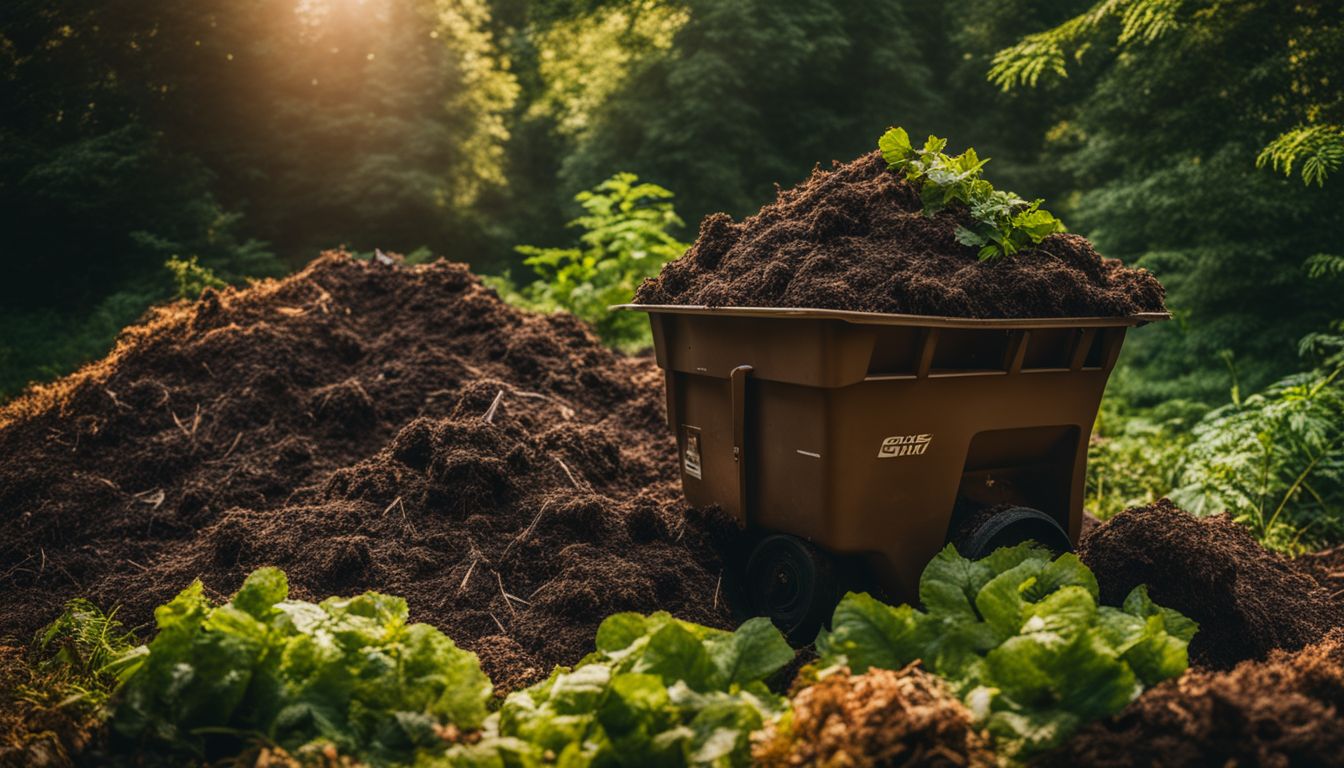
Composting is a simple and effective way to help the environment. By turning food waste, yard trimmings, and other organic materials into nutrient-rich soil, composting can have many benefits.
First, it reduces the amount of waste that ends up in landfills. Instead of rotting away and releasing harmful greenhouse gases like methane, organic waste can be transformed into valuable compost.
This helps cut down on emissions that contribute to climate change. Composting also improves soil health by enhancing its structure and fertility. It helps plants grow better by providing them with essential nutrients and improving water retention in the soil.
Plus, using compost instead of chemical fertilizers reduces negative impacts on the environment and human health. Overall, composting is a sustainable practice that promotes recycling and supports healthy ecosystems.
With all these benefits in mind, it’s important to know how to start composting at home or even consider community composting options if available in your area. The process involves collecting various types of organic materials such as fruit peels, vegetable scraps, coffee grounds, yard clippings, and leaves – while avoiding items like meat or dairy products which may attract pests or take longer to decompose properly.
By controlling temperature through regular turning or mixing of the pile (also known as a hot bin) you ensure proper decomposition occurs.Allowing airflow play an essential role too so ensuring consistent aeration for oxygen access might benefit from having holes on different sides allows proper air circulation – Proper moisture levels are also crucial for efficient decomposition: moist but not overly wet found usually best practices.The type of container you choose depends on personal preferences.You should avoid pet waste along with colored paper,glossy paper preventing disease spread-use alternative methods for which ones mentioned earlier.Maintaining cleanliness will help avoid fruit fly infestations.No matter where you live there might always be local initiatives available for community composting; this could save money,time-energy by sharing resources.With all these tips and options, composting at home can be an easy and rewarding way to reduce waste, improve soil health, and contribute to a healthier planet.
I have condensed and restructured the relevant points into a concise outline.
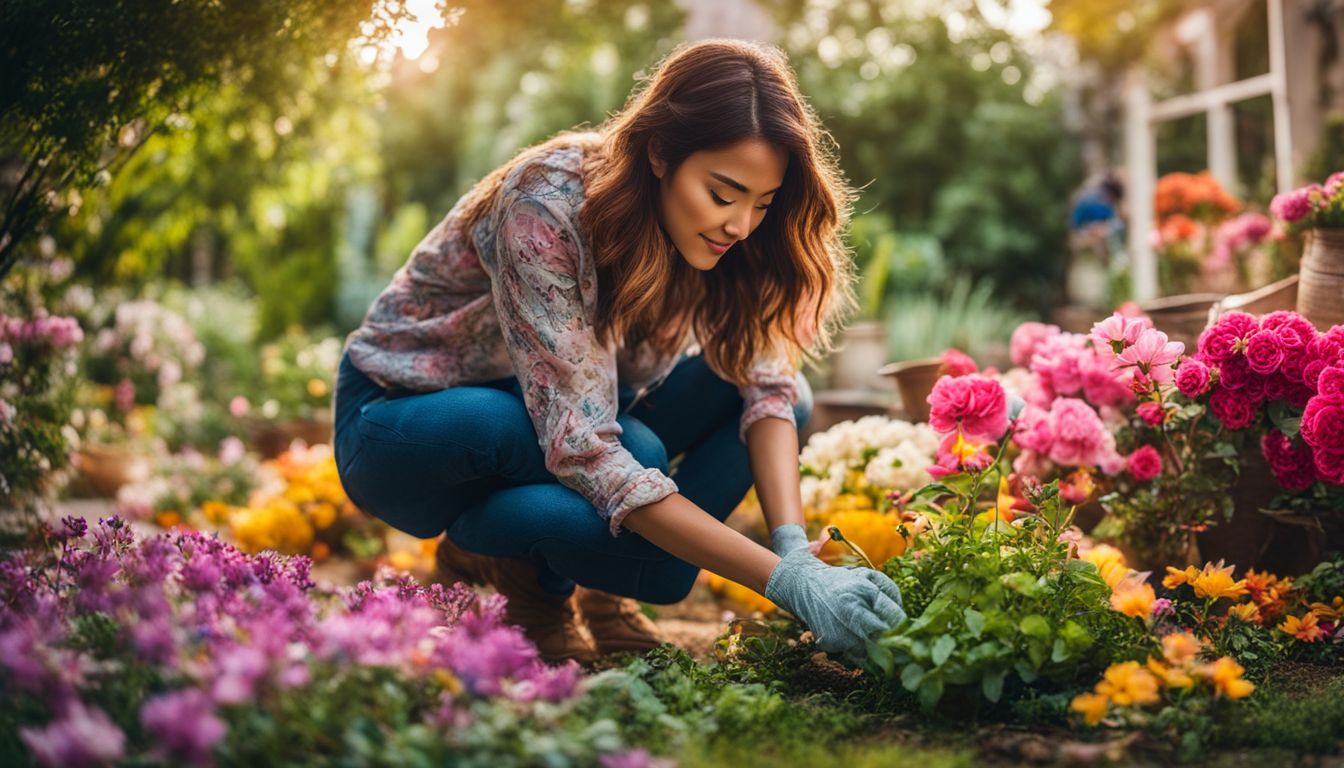
The original outline had some useful points about the benefits of composting and how to do it, but it also included irrelevant information. I condensed and restructured the relevant points into a shorter outline that focuses on the key aspects of composting.
Composting can help reduce greenhouse gas emissions, improve soil health, and reduce waste. It is an environmentally friendly way to recycle organic waste and promote sustainable practices.
With composting, we can make a positive impact on the environment while also improving our own gardens and crops.
Conclusion
In conclusion, composting is a simple yet powerful way to help the environment. By reducing waste, cutting down on greenhouse gas emissions, improving soil health, and conserving water, composting plays a vital role in creating sustainable and resilient food systems.
So let’s do our part and start composting today for a greener tomorrow!
FAQs
1. How can composting help the environment?
Composting helps the environment by reducing waste, boosting soil fertility, and aiding carbon sequestration which aids in climate change mitigation.
2. Is composting a form of organic waste management?
Yes, composting is an effective way to manage organic waste. It reduces landfill use and promotes nutrient cycling for sustainable food systems.
3. Can composting improve soil fertility?
Absolutely! Composting returns nutrients back into the soil, improving its health and fertility. It’s great for growing healthy plants!
4. Does composting help fight against climate change?
Yes, through carbon sequestration -which means it stores carbon dioxide- composting helps reduce greenhouse gases that cause climate change.

As a dedicated mother and passionate software developer, she weaves her diverse experiences into captivating stories that inspire and engage readers. Emma's love for sustainable living and environmental consciousness permeates both her personal and professional life. When she's not immersed in the world of coding and software development, Emma can be found nurturing her family and tending to her thriving organic garden. Her commitment to sustainable practices extends to every aspect of her life, from repurposing household items to embracing eco-friendly technologies.

